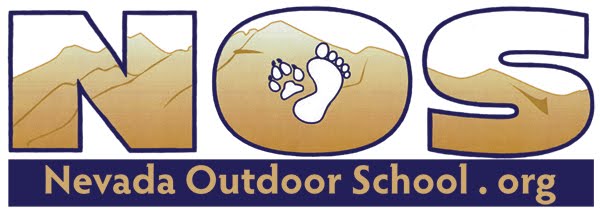Nevada Outdoor School's Outdoor Ethics Program has been selected in the category of Education and Communication to receive one of the Coalition for Recreational Trails’ (CRT’s) respected national awards for 2020.
COALITION FOR RECREATIONAL TRAILS HONORS OUTSTANDING TRAIL PROJECTS AND PROGRAMSWashington, D.C. (October 22, 2020) – Twelve trail projects and programs have been chosen by the Coalition for Recreational Trails (CRT) as recipients of its 2020 Tom Petri Recreational Trails Program Annual Achievement Awards. The awards – honoring former U.S. Representative Tom Petri (WI) – recognize outstanding use of Recreational Trails Program (RTP) funds. These projects were honored at a live virtual ceremony on October 22 with participation by award recipients and key trails champions, including Members of Congress.
Normally, the CRT Awards are presented on Capitol Hill in June. In addition to honorees and members, the annual awards program attracts important Members of Congress, Federal Highway Administration officials, and leaders of federal agencies that manage nearly one-third of our nation’s surface as national parks, forests, refuges and more. COVID-19 has altered the plans for 2020 so there was a virtual awards ceremony on October 22, at 11:00 AM PST via Facebook Live. http://rtc.li/rtpawards2020.
The trail projects honored by the CRT and award categories are:
● Nevada’s Outdoor School’s Outdoor Ethics Program (Nevada) – Education and Communication
· Pine Street Woods (Idaho) – Multiple-Use Management and Corridor Sharing
● Gwinnett Countywide Trails Master Plan (Georgia) – Community Linkage
● Cal-Ida Connector Trail (California) – Maintenance and Rehabilitation
● Boardwalks and Observation Deck Rehab/Replacement (South Carolina) – Accessibility Enhancement
● Thurston Hills Natural Area Trail Project (Oregon) – Public-Private Partnerships and Access to/Use of Public Lands
● Milan Trail Huggers Nash Stream Bridge (New Hampshire) – Construction and Design
● Blue Ridge Tunnel Rehabilitation and Trail Project (Virginia) – Construction and Design
● Monadnock Trail Improvement Project (New Hampshire) – Youth Conservation/Service Corps and Community Outreach
● Sam Houston National Forest—Eastside Multi-Use Trails Rehabilitation (Texas) – Enhancement of Federal Lands
● Maricopa Trail Volunteer Stewardship Program (Arizona) – Engaging Public-Sector Partners
Details on the honored projects and programs as well as a link to viewing the awards ceremony are available at www.rectrails.org.
The Recreational Trails Program (RTP) is an assistance program of the U.S. Department of Transportation's Federal Highway Administration (FHWA). See the RTP website (http://www.fhwa.dot.gov/environment/recreational_trails/). Federal transportation funds benefit recreation by making funds available to the States to develop and maintain recreational trails and trail-related facilities for both nonmotorized and motorized recreational trail uses. The RTP funds come from the Federal Highway Trust Fund, and represent a portion of the motor fuel excise tax collected from nonhighway recreational fuel use: fuel used for off-highway recreation by snowmobiles, all-terrain vehicles, off-highway motorcycles, and off-highway light trucks. A database of the more than 25,000 projects funded by the RTP since its inception in 1991 can be found at www.recreationaltrailsinfo.org.






